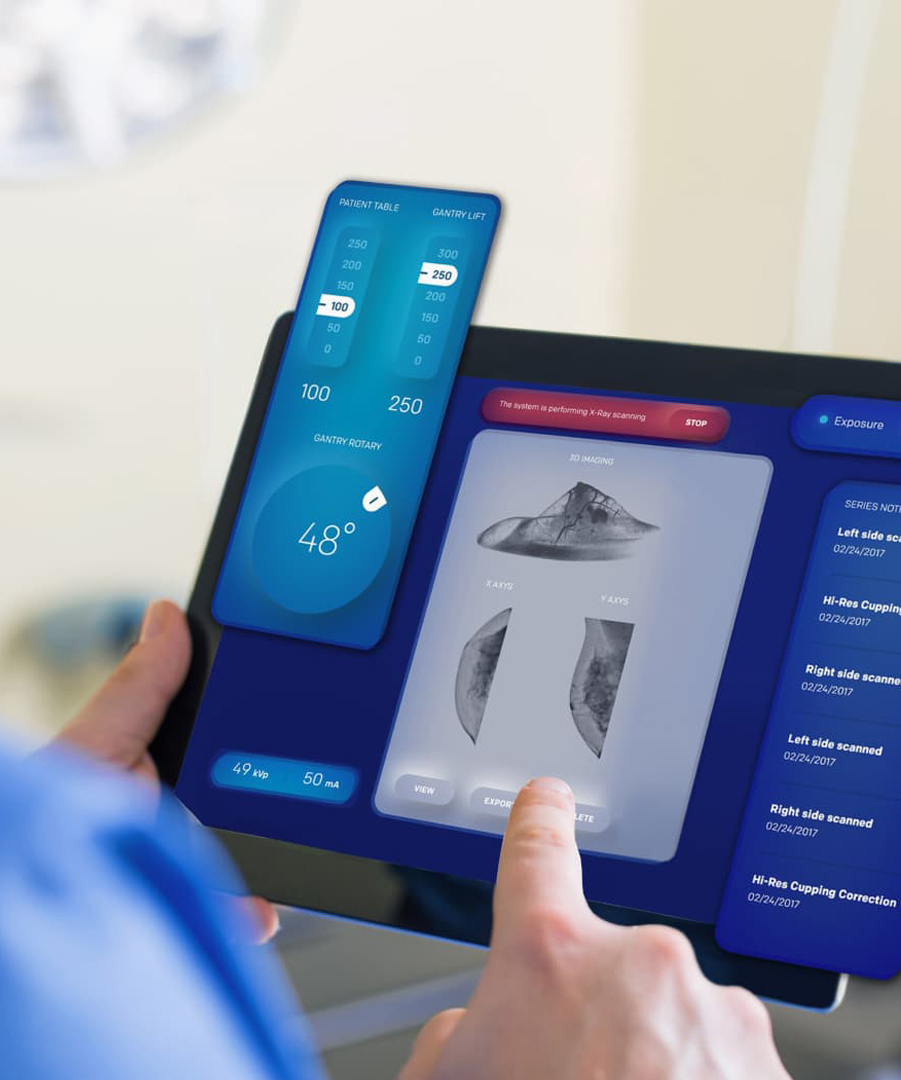


شاحنات الإطفاء تُعدّ شاحنات الإطفاء الرغوية من المعدات الأساسية للاستجابة للحرائق ومهام الإنقاذ في حالات الطوارئ، ويؤثر أداؤها وموثوقيتها بشكل مباشر على كفاءة مكافحة الحرائق وسلامة الأفراد. وقد اكتسبت شركة HOWO، بصفتها علامة تجارية رائدة في قطاع المركبات التجارية في الصين، استخدامًا واسع النطاق في البيئات عالية الخطورة، مثل مصانع البتروكيماويات والمطارات والمجمعات الصناعية، بفضل قوة شاحنات الإطفاء الرغوية الفائقة وثباتها وتصميمها الاحترافي. تُحلل هذه المقالة بشكل منهجي التصميم الهيكلي لـ شاحنات إطفاء رغوية من نوع HOWO لمساعدة المستخدمين على اكتساب فهم متعمق لميزاتهم التقنية ومزاياهم الوظيفية.
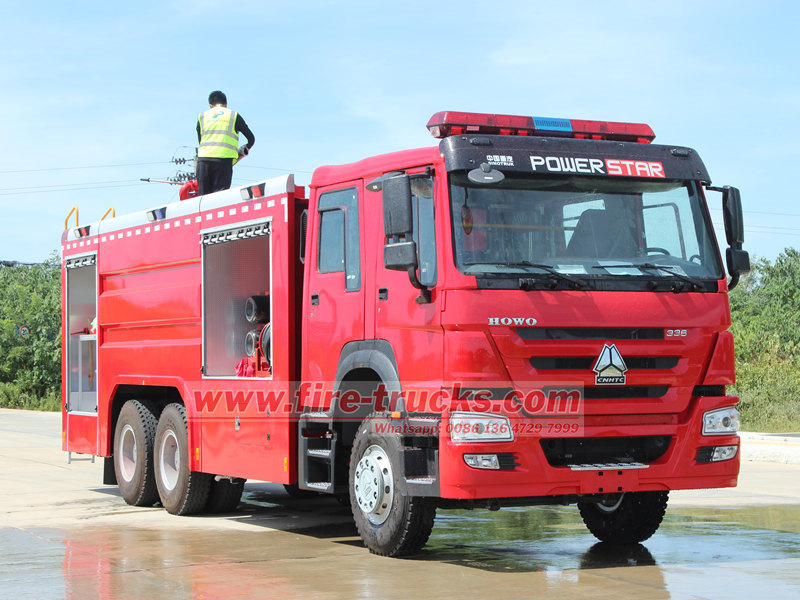
1. نظرة عامة على شاحنات إطفاء الرغوة HOWO
شاحنات إطفاء الرغوة HOWO مُعدّلة باستخدام هيكل HOWO المُتخصص، حيث تتضمن خزان مياه، وخزان رغوة، ومضخة حريق، ونظام توزيع ذكي، وأنابيب، ومعدات إطفاء. تجمع هذه الشاحنات بين قدرات إطفاء الحرائق بالماء والرغوة. صُممت هذه الشاحنات وفقًا للمعايير الوطنية لمعدات إطفاء الحرائق، وهي مُناسبة بشكل خاص لإطفاء حرائق السوائل القابلة للاشتعال، مثل حرائق البترول والمواد الكيميائية، مع تلبية احتياجات عمليات الإنقاذ العامة لحرائق المواد الصلبة.
2. الهيكل الرئيسي لشاحنات إطفاء الرغوة HOWO
تتكون مركبة إطفاء الحرائق الرغوية HOWO من جزأين رئيسيين: الهيكل والهيكل العلوي. يوفر الهيكل قوة دفع المركبة، بينما يتولى الهيكل العلوي مهام مكافحة الحرائق.
(1) الهيكل
يشتهر هيكل HOWO بقوته وثباته وموثوقيته العالية. تستخدم شاحنات الإطفاء عادةً هيكل HOWO مزودًا بمحرك ديزل عالي القدرة لتلبية متطلبات الانتشار السريع في حالات الطوارئ. بالإضافة إلى ذلك، يوفر هيكل HOWO قدرة فائقة على الطرق الوعرة، مما يضمن وصول شاحنة الإطفاء بسرعة إلى موقع الحادث في مختلف ظروف الطرق المعقدة.
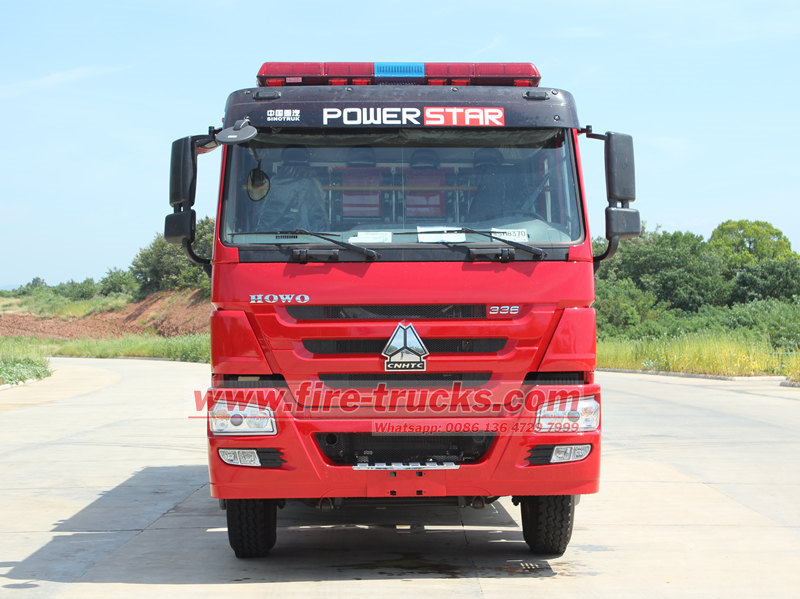
(2) البنية الفوقية
يشكل الهيكل العلوي جوهر عربة إطفاء الحرائق الرغوية HOWO، ويتكون بشكل أساسي من خزان المياه، وخزان الرغوة، ومضخة الحريق، ونظام توزيع الرغوة، ونظام الأنابيب، ومعدات مكافحة الحرائق المختلفة.
• خزان المياه وخزان الرغوة
يُعدّ خزان الماء وخزان الرغوة عنصرين أساسيين لتخزين مواد إطفاء الحرائق. يُوضع خزان الماء عادةً في الجزء الخلفي من سيارة الإطفاء، وهو مصنوع من صفائح فولاذية عالية المتانة، مع إمكانية تعديل سعته حسب الحاجة. يُوضع خزان الرغوة أمام خزان الماء أو فوقه، وهو مصنوع أيضًا من مواد عالية المتانة لتخزين مُركّز الرغوة. كلا الخزانين مُجهّزان بمقاييس مستوى ومنافذ تصريف، مما يُتيح للمُشغّلين مُراقبة مستويات المواد وإجراء الصيانة بسهولة.
• مضخة حريق
تعتبر مضخة الحريق أحد المكونات الأساسية لـ
شاحنة إطفاء رغوية من نوع HOWO
مسؤولة عن ضغط الماء ومركزات الرغوة قبل إيصالها إلى عدادات الحريق أو الخراطيم. تعتمد المضخة عادةً على هيكل طرد مركزي أو ترددي، يتميز بمعدل تدفق وضغط عاليين وأداء مستقر. لتلبية احتياجات مكافحة الحرائق المختلفة، توفر مضخة الحريق خيارات متعددة لسرعة التروس لضبط التدفق ومخرجات الضغط.
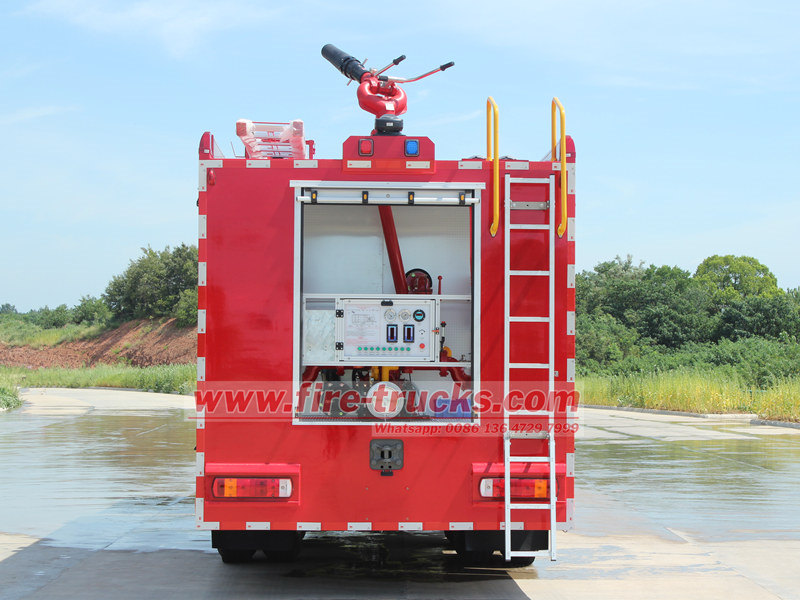
• نظام توزيع الرغوة
يُعد نظام توزيع الرغوة العنصر الأساسي الذي يُمكّن من إخماد الحرائق باستخدام الرغوة. فهو يتحكم بدقة في نسبة الماء إلى مُركّز الرغوة، مما يضمن فعالية مثالية في إخماد الحرائق. يستخدم النظام عادةً أنبوب فنتوري أو مُوزّعًا ميكانيكيًا، يتميز بدقته وبساطته وموثوقيته.
• نظام الأنابيب
يربط نظام الأنابيب مضخة الحريق، وخزان المياه، وخزان الرغوة، ومعدات الإطفاء، ناقلًا الماء ومركز الرغوة إلى موقع الحريق. مصنوع من أنابيب أو خراطيم فولاذية عالية القوة، ويتميز بمقاومة ممتازة للضغط والتآكل. كما يتضمن صمامات وتجهيزات متنوعة، مما يسمح للمشغلين بتوصيل وتبديل الإعدادات حسب الحاجة.
• معدات مكافحة الحرائق
تُعد معدات مكافحة الحرائق، بما في ذلك أجهزة الرصد والخراطيم، الأداة المباشرة لإطفاء الحرائق. تُركّب أجهزة الرصد عادةً على سقف أو مؤخرة شاحنة الإطفاء، وتوفر تفريغًا طويل المدى وعالي الجودة، مما يجعلها مناسبة للحرائق واسعة النطاق. توجد الخراطيم على جانبي الشاحنة أو مؤخرتها، ويمكن ضبطها بمرونة، مما يُمكّن المُشغّلين من مكافحة الحرائق من مواقع مُختلفة.
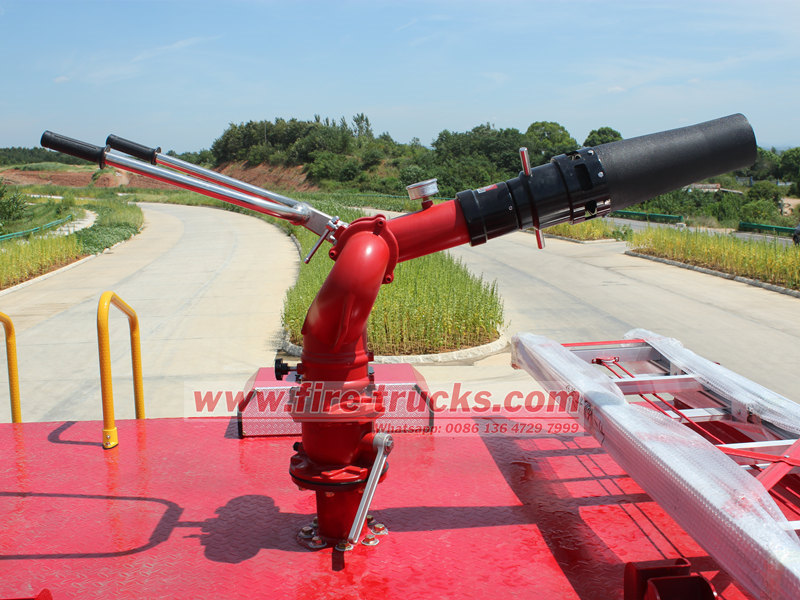
3. مزايا الأداء لشاحنات إطفاء خزانات الرغوة HOWO
(1) كفاءة عالية:
مزودة بنظام متقدم لتوزيع الرغوة ومعدات مكافحة الحرائق، تستطيع شاحنات مكافحة الحرائق الرغوية HOWO إطفاء أنواع مختلفة من الحرائق بسرعة وفعالية، وخاصة حرائق السوائل القابلة للاشتعال مثل حرائق النفط.
(2) الاستقرار والموثوقية:
يوفر هيكل HOWO دعمًا قويًا بفضل قوته واستقراره الفائقين، في حين يضمن الهيكل العلوي، المصنوع من مواد عالية القوة وتقنيات التصنيع المتقدمة، التشغيل الموثوق به حتى في البيئات القاسية.
(3) عملية سهلة الاستخدام:
صُمم نظام التحكم ليكون بديهيًا، مما يتيح للسائقين التعرف على وظائفه بسرعة. كما زُوّدت الشاحنة بأجهزة مساعدة متطورة للقيادة ومكافحة الحرائق لتعزيز الكفاءة.
(4) سهولة الصيانة:
صُمم كل مكون بمنافذ صيانة ومساحات فحص سهلة الوصول، مما يُسهّل الصيانة الدورية. كما تتميز الشاحنة بنظام شامل لتشخيص الأعطال وأجهزة إنذار للكشف عن المشاكل ومعالجتها فورًا.
4. سيناريوهات تطبيق مركبات إطفاء الحرائق المصنوعة من رغوة HOWO
بفضل كفاءتها العالية وموثوقيتها وسهولة تشغيلها وصيانتها، تُستخدم شاحنات إطفاء الرغوة HOWO على نطاق واسع في قطاعات متعددة، بما في ذلك:
(1) المصانع الكيميائية:
تحتوي هذه المنشآت على كميات كبيرة من المواد القابلة للاشتعال والانفجار، مما يجعل مكافحة الحرائق أمرًا بالغ الأهمية. تستطيع سيارات الإطفاء الرغوية إخماد الحرائق بسرعة، مما يحمي الأرواح والممتلكات.
(2) مستودعات النفط:
نظراً لاحتواء مستودعات النفط على كميات كبيرة من السوائل القابلة للاشتعال، فإنها تتطلب إجراءات صارمة للسلامة من الحرائق. توفر شاحنات إطفاء الرغوة قدرات متخصصة في مكافحة حرائق النفط، مما يضمن السلامة.
(3) المطارات:
نظراً لكثافة حركة النقل في المطارات، فإنها تتطلب أعلى معايير السلامة من الحرائق. تُمكّن شاحنات الإطفاء الرغوية من الاستجابة السريعة وإخماد الحرائق بفعالية، مما يضمن استمرارية العمليات وسلامة الركاب.
باعتبارها جهاز إطفاء حرائق عالي الكفاءة والثبات والموثوقية، تلعب سيارات الإطفاء الرغوية دورًا حيويًا في مختلف المجالات. من خلال تحليل هيكلها بالتفصيل، نكتسب فهمًا أعمق لخصائص أدائها ومزاياها. ومن المتوقع أن تُستخدم في المستقبل،
شاحنات إطفاء من نوع HOWO
وسوف يستمرون في حماية الأرواح والممتلكات بمساهماتهم التي لا غنى عنها.
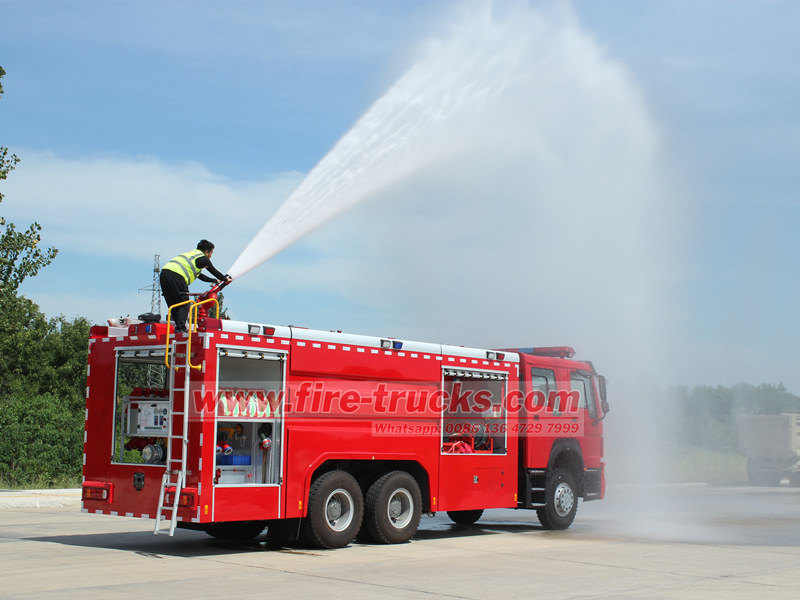
قد تكون مهتمًا بالمعلومات التالية